Page 1 of 8
Ostrich
Posted: Thu May 01, 2014 7:05 pm
by Dewi
 http://www.livescience.com/27433-ostriches.html
http://www.livescience.com/27433-ostriches.html
Please post any photos or information about Ostriches here.
Re: Ostrich - Bird of the month, May 2014
Posted: Thu May 01, 2014 8:50 pm
by nan
have a look
HERE 
Re: Ostrich - Bird of the month - May 2014
Posted: Sat May 03, 2014 9:37 am
by nan
Ngorongoro (Tanzania)

3.5.2003
Re: Ostrich - Bird of the month - May 2014
Posted: Sat May 03, 2014 10:07 am
by Tina
Masai Ostriches (Struthio camelus massaicus)
male
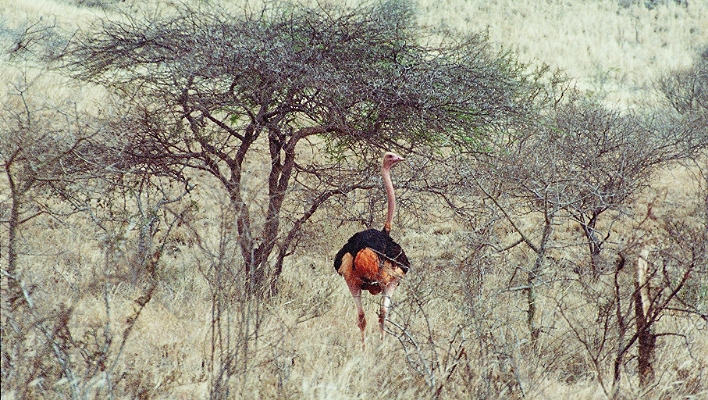
Tsavo West( Kenya), September 2006
Re: Ostrich - Bird of the month - May 2014
Posted: Sat May 03, 2014 10:08 am
by Tina
female and chicks

Tsavo West( Kenya), September 2006
Re: Ostrich - Bird of the month - May 2014
Posted: Sat May 03, 2014 11:33 am
by Lisbeth
Spot the bird!
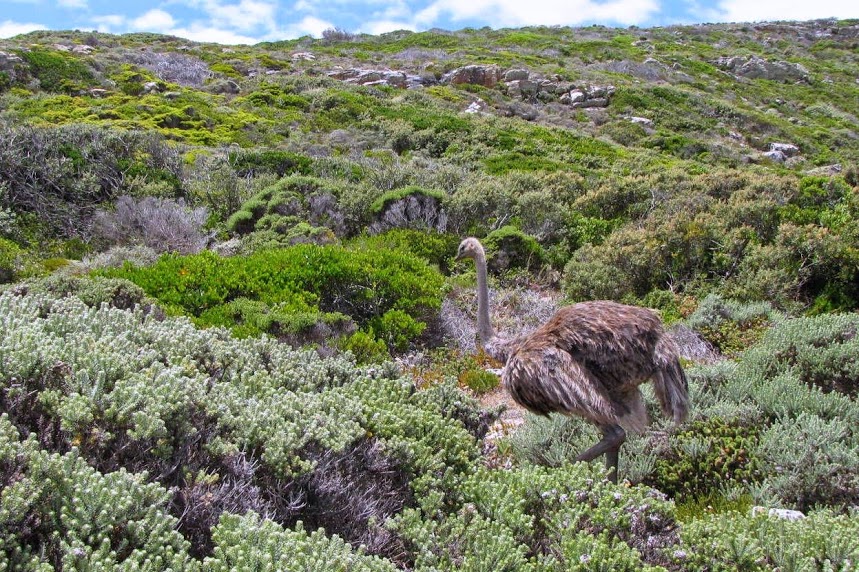
Cape Point 2008
Re: Ostrich - Bird of the month - May 2014
Posted: Sat May 03, 2014 9:17 pm
by nan
Kenya - Masai Mara 2000

Re: Ostrich - Bird of the month - May 2014
Posted: Sun May 04, 2014 8:24 am
by Amoli
The Ostrich or Common Ostrich (Struthio camelus) is either one or two species of large flightless birds native to Africa, the only living member(s) of the genus Struthio, which is in the ratite family. Some analyses indicate that the Somali Ostrich may be better considered a full species separate from the Common Ostrich, but most taxonomists consider it to be a subspecies.
Ostriches normally spend the winter months in pairs or alone. Only 16 percent of ostrich sightings were of more than two birds. During breeding season and sometimes during extreme rainless periods ostriches live in nomadic groups of five to 100 birds (led by a top hen) that often travel together with other grazing animals, such as zebras or antelopes.
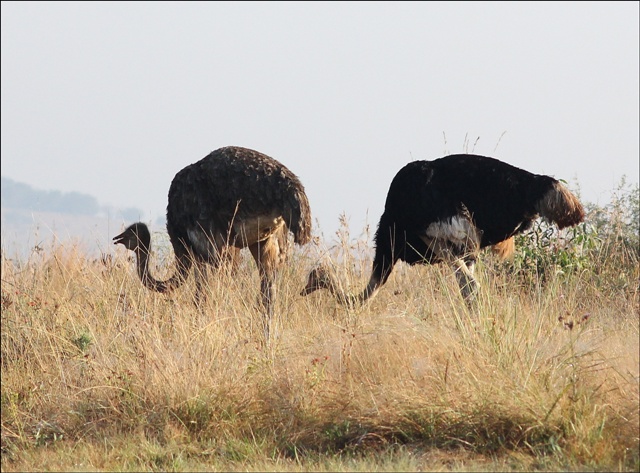
Ostriches usually weigh from 63 to 145 kilograms (139–320 lb),[
At sexual maturity (two to four years), male ostriches can be from 2.1 to 2.8 m (6 ft 11 in to 9 ft 2 in) in height, while female ostriches range from 1.7 to 2 m (5 ft 7 in to 6 ft 7 in) tall]
The feathers of adult males are mostly black, with white primaries and a white tail. However, the tail of one subspecies is buff.

Females and young males are greyish-brown and white.
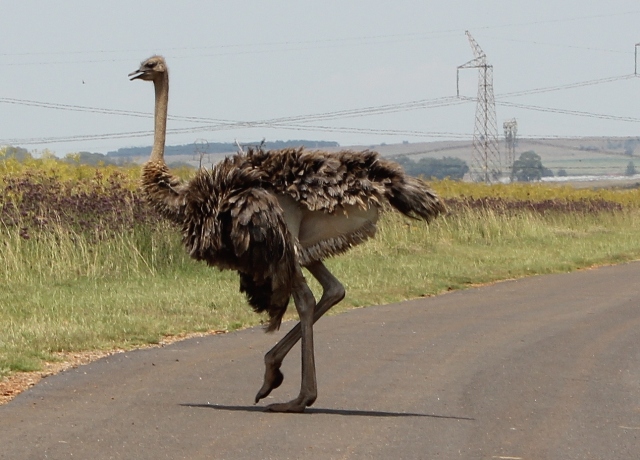
Re: Ostrich - Bird of the month - May 2014
Posted: Sun May 04, 2014 8:29 am
by Amoli
The head and neck of both male and female ostriches is nearly bare, with a thin layer of down.
The skin of the female's neck and thighs is pinkish gray, while the male's is blue-gray, gray or pink dependent on subspecies.

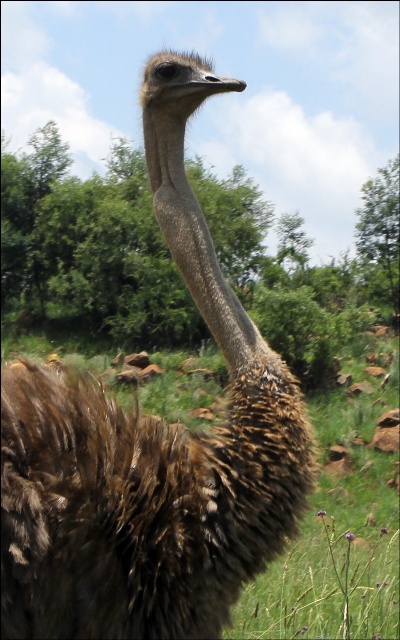
The long neck and legs keep their head up to 2.8 m (9 ft) above the ground, and their eyes are said to be the largest of any land vertebrate: 50 mm (2.0 in) in diameter, they can therefore perceive predators at a great distance.
The eyes are shaded from sunlight from above. However, the head and bill are relatively small for the birds' huge size, with the bill measuring 12 to 14.3 cm (4.7 to 5.6 in).
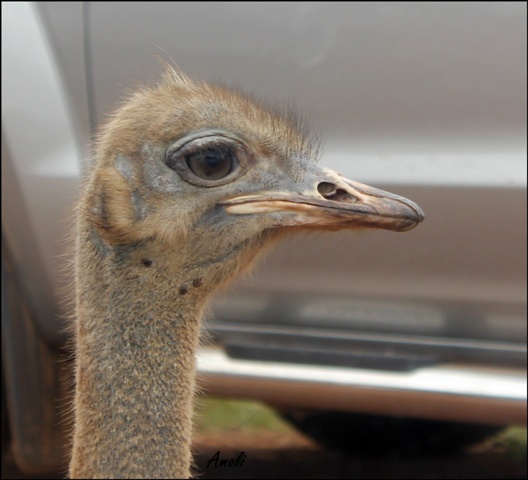
Their skin varies in colour depending on the subspecies, with some having light or dark gray skin and others having pinkish or even reddish skin.
The strong legs of the ostrich are unfeathered and show bare skin, with the tarsus (the lowest upright part of the leg) being covered in scales: red in the male, black in the female.
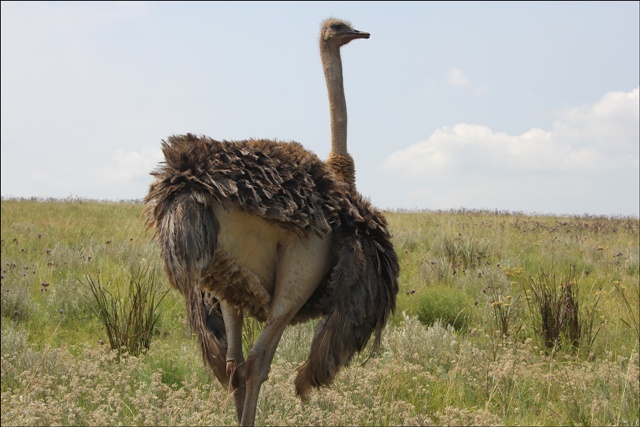
Re: Ostrich - Bird of the month - May 2014
Posted: Sun May 04, 2014 8:33 am
by Amoli
The tarsus of the ostrich is the largest of any living bird, measuring 39 to 53 cm (15 to 21 in) in length.

The bird has just two toes on each foot (most birds have four), with the nail on the larger, inner toe resembling a hoof. The outer toe has no nail. The reduced number of toes is an adaptation that appears to aid in running, useful for getting away from predators. Ostriches can run at a speed over 70 km/h (43 mph) and can cover 3 to 5 m (9.8 to 16.4 ft) in a single stride.

Ostriches’ wings reach a span of about 2 metres and the wing chord measurement of 90 cm (35 in) is around the same size as for the largest flying birds. The wings are used in mating displays and to shade chicks to cover the naked skin of the upper legs and flanks to conserve heat, and as "rudders" to help them change direction while running



 3.5.2003
3.5.2003 Cape Point 2008
Cape Point 2008









